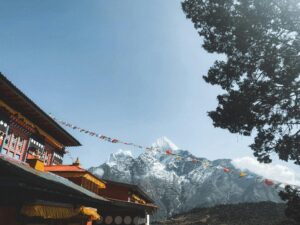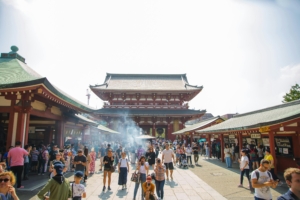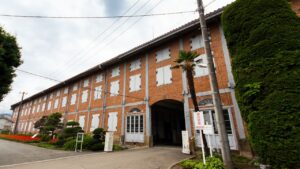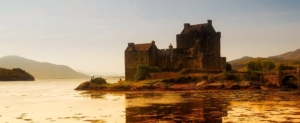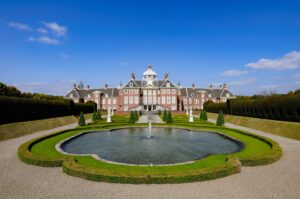Introduction to Nikko Toshogu Shrine
Nikko Toshogu Shrine, a jewel of Japanese heritage nestled in the serene landscapes of Nikko, Tochigi Prefecture, is not just a tourist destination but a pivotal part of Japan’s cultural and historical tapestry. This shrine, dedicated to Tokugawa Ieyasu, the founder of the Tokugawa shogunate, is renowned for its breathtaking architecture and intricate carvings, including the famous “See no evil, speak no evil, hear no evil” monkey sculptures.
Visiting Nikko Toshogu Shrine offers a unique glimpse into the spiritual and artistic traditions of Japan. The shrine’s lush surroundings and the striking contrast of its colorful decorations against the natural green backdrop make it a photographer’s paradise. Whether you’re a history enthusiast, a culture seeker, or simply in search of peace, Nikko Toshogu has something to offer.
| Best Time to Visit | April to October | Enjoy the cherry blossoms and autumn colors |
|---|---|---|
| Entrance Fees | Adults: 1300 yen | Children: 450 yen |
| Getting There | Train or Bus | Accessible from Tokyo via Tobu Railway or JR Lines |
For those planning a visit, understanding the best times to visit is crucial. The shrine is particularly mesmerizing during the cherry blossom season in spring and the vibrant autumn colors. To enhance your experience, consider visiting early in the morning to avoid crowds and fully immerse yourself in the tranquility of the shrine grounds.
Moreover, Nikko Toshogu Shrine is more than just its main buildings. The surrounding area offers a plethora of other attractions, including the Futarasan Shrine, Rinnoji Temple, and the scenic Lake Chuzenji. Combining these sites can make for a fulfilling day trip or a relaxing weekend getaway.
For a truly enriching experience, delve into the lesser-known stories of the shrine’s construction and the symbolism behind its many sculptures and carvings. Each visit brings new insights and a deeper appreciation of Japan’s rich history and cultural depth.
The Historical and Cultural Significance of Nikko Toshogu Shrine
Nikko Toshogu Shrine stands as a monumental site in Japan, renowned for its rich history and profound cultural significance. This shrine, nestled in the serene landscapes of Nikko, has been a pivotal part of Japanese heritage since its establishment in the 17th century.
The shrine was constructed as a mausoleum for Tokugawa Ieyasu, the founder of the Tokugawa shogunate, which ruled Japan for over 250 years. This makes it not only a religious site but also a symbol of political power and stability in Japanese history.
- The architecture of Nikko Toshogu is a splendid example of gongen-zukuri style, which blends Shinto and Buddhist structural elements.
- Its lavish decorations and intricate carvings, including the famous “See no Evil, Speak no Evil, and Hear no Evil” monkeys, reflect the artistic and spiritual richness of the Edo period.
Visiting Nikko Toshogu offers a unique glimpse into the spiritual and historical journey of Japan. Whether you are interested in its architectural marvels, the peaceful natural surroundings, or the detailed craftsmanship, the shrine provides a profound experience that resonates with both locals and tourists alike.
| Feature | Details |
|---|---|
| Location | Nikko, Tochigi Prefecture, Japan |
| Established | 1617 |
| Significance | Mausoleum of Tokugawa Ieyasu |
For those planning a visit, it is advisable to consider the different seasons, as the scenic beauty of Nikko transforms with the cherry blossoms of spring and the vibrant leaves of autumn. Each season offers a distinct and memorable backdrop to this historic site, enhancing the spiritual and visual experience.
Understanding the historical and cultural context of Nikko Toshogu Shrine enriches the visit, making it more than just a travel destination but a journey into the heart of Japan’s cultural heritage.
Planning Your Visit to Nikko Toshogu Shrine
Visiting the Nikko Toshogu Shrine, a jewel of Japanese heritage and a UNESCO World Heritage site, requires thoughtful planning to fully appreciate its historical and cultural significance. This guide aims to provide you with all the necessary information and unique insights to make your visit memorable.
Best Time to Visit
The shrine experiences different seasonal landscapes, each offering a unique ambiance. Spring (April to May) showcases beautiful cherry blossoms, while autumn (October to November) is renowned for vibrant fall colors. These periods are also the busiest, so if you prefer a quieter visit, consider early summer or late autumn.
Getting There
Nikko is accessible from Tokyo by various means of transportation. The most convenient way is taking the JR Tohoku Shinkansen to Utsunomiya and then transferring to the JR Nikko Line. Alternatively, direct buses are available from Tokyo, offering scenic views along the way.
Entrance Fees and Tour Packages
The shrine has a modest entrance fee, which contributes to its preservation. For a more in-depth experience, consider booking a tour package. These often include guided tours that provide deeper insights into the shrine’s history and significance, making your visit even more enriching.
Unique Tips for Visitors
- Visit early in the morning to experience the shrine in a tranquil state before the crowds arrive.
- Check for special events or festivals happening during your visit, as these can offer unique cultural experiences.
- Don’t rush your visit; allocate at least half a day to explore the shrine and its surroundings thoroughly.
By incorporating these tips into your travel plans, your visit to Nikko Toshogu Shrine will not only be enjoyable but also filled with the rich cultural heritage that this iconic site has to offer.
How to Get to Nikko Toshogu Shrine
Visiting the historic Nikko Toshogu Shrine is a must for anyone traveling to Japan. Located in the scenic area of Nikko, Tochigi Prefecture, this guide will help you understand the best transportation options to reach this iconic site.
Traveling by Train:
The most convenient way to reach Nikko Toshogu Shrine is by train. From Tokyo, you can take the JR Tohoku Shinkansen to Utsunomiya Station and then transfer to the JR Nikko Line. Get off at Nikko Station, from where the shrine is just a short bus ride away. The entire journey can take approximately two hours, making it a feasible day trip from Tokyo.
Driving to Nikko:
If you prefer the flexibility of driving, the route to Nikko Toshogu Shrine is straightforward. From Tokyo, it takes about two hours via the Tohoku Expressway. Parking is available near the shrine, though it can be crowded during peak tourist seasons.
Bus Services:
Direct bus services from Tokyo to Nikko are also available and can be a convenient option. Buses leave from major stations like Shinjuku and Asakusa, taking you directly to the shrine area. This option is particularly useful for those traveling without a Japan Rail Pass.
| Mode of Transport | Duration | Cost (Approx.) |
|---|---|---|
| Train (from Tokyo) | 2 hours | ¥5,000 |
| Car | 2 hours | Cost of fuel + tolls |
| Bus | 2.5 hours | ¥3,500 |
Choosing the best transportation option depends on your travel preferences, budget, and the time you have available. Each method offers a different experience, whether you’re looking for the speed of the shinkansen or the scenic route via road.
For a seamless visit, consider checking the latest travel schedules and booking your tickets in advance, especially during the busy spring and autumn seasons when the shrine and its surroundings are particularly beautiful.
Best Time to Visit Nikko Toshogu Shrine
Planning a trip to the historic Nikko Toshogu Shrine? Timing your visit can greatly enhance your experience. This guide will help you decide the best time to visit based on weather, crowd sizes, and special events, ensuring a memorable journey to this iconic Japanese landmark.
Seasonal Considerations:
- Spring (March to May): The shrine is surrounded by lush greenery and cherry blossoms, making it a picturesque time for photographers and nature lovers. The weather is mild, although it can be a bit crowded due to the cherry blossom season.
- Summer (June to August): Summer brings lush green landscapes but also the rainy season in June and hot, humid weather thereafter. Early mornings or late evenings are recommended to avoid the heat.
- Autumn (September to November): Arguably the best time to visit, autumn showcases vibrant fall colors that beautifully contrast with the shrine’s architecture. The weather is cool and comfortable.
- Winter (December to February): The shrine under a blanket of snow offers a serene and majestic atmosphere, though it can be quite cold. Fewer tourists visit during this time, which means a more peaceful experience.
Special Events:
Visiting during special events can make your trip even more special. The Shuki Taisai Grand Autumn Festival, held in October, features a procession of over a thousand people dressed in samurai armor, offering a unique glimpse into Japan’s rich history.
Visitor Tips:
To maximize your experience, consider these tips:
- Weekdays are generally less crowded than weekends.
- Early morning visits allow you to enjoy the shrine in a more tranquil setting.
- Check local weather forecasts in advance to dress appropriately for the season.
By choosing the right time to visit based on these insights, you’ll enjoy all that Nikko Toshogu Shrine has to offer, from its stunning natural beauty to its fascinating cultural events.
Nikko Toshogu Shrine Entrance Fees
When planning a visit to the historic Nikko Toshogu Shrine, understanding the entrance fees is essential for a well-prepared itinerary. The shrine, a UNESCO World Heritage site, not only offers a rich tapestry of history and culture but also requires a modest fee to help maintain its majestic beauty and heritage.
| Type of Ticket | Price |
|---|---|
| Adults | 1300 yen |
| Children (ages 7-15) | 450 yen |
| Seniors (ages 65+) | 1200 yen |
The entrance fees for Nikko Toshogu Shrine are used to preserve the intricate carvings, stunning gold leaf decorations, and the serene natural surroundings of the shrine. By paying this fee, visitors contribute to the ongoing preservation efforts that ensure future generations can also enjoy the splendor of this historic site.
- Discounts: Group discounts are available for parties of 30 or more.
- Annual Pass: For frequent visitors, an annual pass might be a cost-effective option.
- Combination Tickets: Consider purchasing a combination ticket if you plan to visit other attractions in the Nikko area.
For those looking to enhance their experience, the shrine offers guided tours which can be booked in advance. These tours provide deeper insights into the history and cultural significance of the shrine, making your visit even more memorable.
Remember, the best times to visit Nikko Toshogu Shrine are during the spring and autumn seasons when the scenery is particularly breathtaking. Planning your visit during these times can provide a spectacular backdrop to the already stunning architecture of the shrine.
Exploring Nikko Toshogu Shrine
Discover the majestic Nikko Toshogu Shrine, a jewel of Japanese heritage nestled in the lush landscapes of Nikko, Japan. This guide offers an in-depth look at the shrine’s rich history, stunning architecture, and the unique cultural experiences it offers to visitors from around the world.
Historical Significance
Nikko Toshogu Shrine, established in the 17th century, is not just a religious site but a monument to the Tokugawa shogunate’s legacy. It is dedicated to Tokugawa Ieyasu, the founder of the Tokugawa shogunate, which ruled Japan for over 250 years. The shrine’s intricate carvings and lavish decorations reflect the prosperity and stability of the Edo period.
Architectural Marvels
The architecture of Nikko Toshogu is a feast for the eyes, featuring several buildings that are designated as National Treasures of Japan. Key highlights include the Yomeimon Gate, renowned for its elaborate wood carvings and gold leaf decorations, and the Five-Story Pagoda that stands at the entrance, symbolizing the five elements believed to be the foundation of the universe in Japanese cosmology.
| Visitor Information | Opening Hours | Entrance Fees |
|---|---|---|
| Best Time to Visit | April to October | Adults: 1300 yen, Children: 450 yen |
Unique Visitor Tips
- Visit during autumn to see the shrine against a backdrop of vibrant fall colors.
- Early morning visits are recommended to avoid crowds and experience the shrine’s tranquil atmosphere.
- Don’t miss the Shinkyo Bridge, a sacred site that offers picturesque views and is just a short walk from the shrine.
For those looking to enhance their visit, consider exploring the surrounding area, which is rich in natural beauty and additional historical sites. Whether you’re a history enthusiast, culture seeker, or simply in search of a peaceful retreat, Nikko Toshogu Shrine offers a profound and enriching experience that resonates with every visitor.
Key attractions and architectural highlights
Nikko Toshogu Shrine, a UNESCO World Heritage site, is not only a significant cultural landmark but also a masterpiece of Japanese architecture. This guide highlights the key attractions and architectural elements that make the shrine a must-visit destination.
- Yomeimon Gate: Often referred to as the ‘Sunset Gate’ due to its intricate beauty that one could stare at until sunset. This gate is a stunning example of Japanese craftsmanship, featuring over 500 carvings that depict traditional stories and mythical creatures.
- Five-Story Pagoda: The pagoda stands at an impressive height of 36 meters and is adorned with vibrant colors and carvings. It symbolizes the five elements of Buddhist cosmology and offers a picturesque view against the backdrop of Nikko’s lush mountains.
- Sleeping Cat: A small but enchanting carving, the Sleeping Cat represents peace and tranquility. It is a favorite among visitors who appreciate its subtle beauty and the legend behind its creation.
- Sacred Stable: Home to the famous carving of the three wise monkeys who “see no evil, hear no evil, speak no evil,” this structure reflects teachings of moral and ethical conduct.
Each architectural element of Nikko Toshogu Shrine carries deep cultural and historical significance, making it a profound educational experience as well as a visual delight. Whether you are exploring the detailed carvings or enjoying the serene environment, the shrine offers a unique glimpse into Japan’s rich heritage.
| Attraction | Description | Significance |
|---|---|---|
| Yomeimon Gate | Elaborately decorated gate with over 500 carvings. | Cultural masterpiece showcasing craftsmanship. |
| Five-Story Pagoda | Tall, colorful pagoda symbolizing Buddhist elements. | Represents spiritual and aesthetic significance. |
| Sleeping Cat | Small carving symbolizing peace. | Highlights the artistic subtlety of Japanese culture. |
| Sacred Stable | Features the carving of the three wise monkeys. | Embodies ethical teachings and cultural values. |
Visiting Nikko Toshogu Shrine offers more than just a glimpse into the past; it is an immersive journey through the art and soul of Japan. Each visit brings new insights and a deeper appreciation of the intricate details that define this iconic site.
Lesser-known spots within the shrine complex
While the Nikko Toshogu Shrine is renowned for its stunning architecture and rich history, many visitors often miss out on some of its lesser-known yet equally fascinating spots. Exploring these hidden gems can provide a more intimate and unique experience of the shrine’s cultural and spiritual significance.
- Sacred Warehouse: Tucked away behind the main structures, this area houses ancient artifacts and ceremonial items, offering a glimpse into the shrine’s operational history.
- The Path of Meditation: A less frequented path that allows visitors to experience the tranquility of the shrine’s natural surroundings, perfect for personal reflection.
- Kagura-den: Often overlooked, this stage is used for traditional Shinto dances and music performances, providing insight into the cultural practices associated with the shrine.
Visiting these spots not only enriches your understanding of the shrine’s heritage but also offers a quieter, more reflective visit away from the main tourist paths. Each of these locations holds stories and significance that contribute to the overarching tapestry of Nikko Toshogu’s history.
| Spot | Description | Visitor Tips |
|---|---|---|
| Sacred Warehouse | Home to historical relics. | Best visited in the morning for a peaceful experience. |
| Path of Meditation | A serene path ideal for reflection. | Wear comfortable shoes for the uneven terrain. |
| Kagura-den | Site for traditional performances. | Check performance schedules in advance. |
By venturing beyond the well-trodden paths, you can discover the true essence of Nikko Toshogu Shrine, making your visit a memorable journey into the heart of Japanese culture and spirituality.
Tips for a Better Visit to Nikko Toshogu Shrine
Visiting the Nikko Toshogu Shrine, a jewel of Japanese heritage, can be an enriching experience. To make the most of your trip, consider these practical tips tailored to enhance your visit.
- Plan Your Visit During Off-Peak Seasons: To avoid the crowds and fully appreciate the shrine’s beauty, consider visiting during the quieter months. Early spring and late autumn are ideal times, offering pleasant weather and fewer tourists.
- Understand the Entrance Fees: Prepare for your visit by checking the latest entrance fees online. Fees may vary by season or during special events, so having this information beforehand helps in planning your budget.
- Explore Beyond the Main Sites: While the main structures are impressive, the surrounding areas also hold charming lesser-known spots. Take time to explore the nearby gardens and secondary buildings, which are often overlooked.
- Utilize Local Guides: For a deeper understanding of the shrine’s history and significance, consider hiring a local guide. Their insights can enrich your experience and reveal fascinating stories behind the art and architecture.
- Check Transportation Options: Nikko is accessible by various means of transport. Review the best routes whether you are coming by train, bus, or car. Remember, the earlier you start your day, the smoother your travel will likely be.
By following these tips, your visit to Nikko Toshogu Shrine will not only be enjoyable but also filled with learning and appreciation for its cultural and historical significance.
| Tip | Details |
|---|---|
| Best Time to Visit | Early spring or late autumn |
| Entrance Fees | Check online for current rates |
| Transportation | Train, bus, or car |
| Extra Tip | Consider exploring early in the day |
Remember, each season offers a different perspective of the shrine’s beauty, so choose the time that best suits your interests and schedule. Enjoy your journey to this iconic cultural landmark!
Seasonal Considerations and Visitor Tips
Visiting the Nikko Toshogu Shrine offers a unique experience that varies significantly with the seasons. Understanding the best times to visit and useful tips can enhance your trip, making it more enjoyable and meaningful.
Best Times to Visit Nikko Toshogu Shrine
- Spring (March to May): The shrine is surrounded by blooming cherry blossoms, creating a picturesque setting. This is also the time for the annual Shunki Reitaisai, a grand festival held in May.
- Autumn (September to November): Autumn brings vibrant fall colors that spectacularly frame the shrine’s architecture. The cooler weather is ideal for exploring the extensive grounds comfortably.
- Winter (December to February): Snow often covers the shrine in winter, offering a serene and pristine landscape. Fewer tourists visit during this season, providing a more peaceful experience.
Each season not only changes the scenery but also affects the visitor experience in terms of weather, festivals, and crowd sizes.
Visitor Tips for Nikko Toshogu Shrine
- Early Morning Visits: Arriving early in the morning can help you avoid the crowds that typically gather by midday, especially during peak tourist seasons.
- Guided Tours: Consider booking a guided tour to gain deeper insights into the shrine’s history and significance. Many nuances and stories are easily missed without a knowledgeable guide.
- Transportation: The shrine is accessible by bus from Nikko Station. Check the bus schedules in advance to plan your trip efficiently.
- Entrance Fees: Entrance fees vary by season and events. It’s advisable to check the official website for the most current information before your visit.
By planning your visit according to these seasonal insights and visitor tips, you can ensure a more fulfilling journey to the Nikko Toshogu Shrine, one of Japan’s most revered cultural treasures.
What to Bring on Your Visit to Nikko Toshogu Shrine
Planning a trip to the majestic Nikko Toshogu Shrine? Ensuring you have everything you need for a comfortable and enriching experience is crucial. Here’s a guide to help you pack smartly for your visit.
- Comfortable Footwear: Expect a lot of walking through the shrine’s expansive grounds. Comfortable shoes are a must.
- Weather-Appropriate Clothing: Check the weather forecast in advance. Nikko can be quite cool, especially in the early mornings and evenings, so bring layers.
- Camera: With its stunning architecture and beautiful natural surroundings, you’ll want to capture lots of photos.
- Water and Snacks: There are few places to purchase food and drinks inside the shrine area, so it’s wise to bring your own, especially during peak tourist seasons.
- Cash: Not all vendors accept credit cards, and you may need cash for small purchases and donations.
Remember, the shrine is a sacred place, so respectful attire is advised. Avoid overly casual clothing like tank tops and shorts, and consider bringing a hat or scarf for sun protection during your exploration. By packing thoughtfully, you can focus more on the spiritual and historical richness of your visit to Nikko Toshogu Shrine.
Beyond Nikko Toshogu Shrine: Other Attractions in Nikko
While the Nikko Toshogu Shrine is undoubtedly a jewel in Nikko’s crown, the area offers a plethora of other attractions that promise enriching experiences and breathtaking sights. Exploring beyond the shrine can give visitors a deeper appreciation of Nikko’s cultural and natural beauty.
Explore the Natural Wonders
- Kegon Falls: One of Japan’s most famous waterfalls, Kegon Falls is a must-visit for nature lovers. The waterfall is especially stunning during the autumn when the surrounding foliage turns a vibrant red and gold.
- Lake Chuzenji: Created by volcanic activity, this scenic lake is perfect for boating, hiking, and enjoying tranquil views. The area around the lake is also known for its hot springs, where visitors can relax after a day of exploration.
Historical and Cultural Sites
- Rinnoji Temple: This beautiful temple complex features a stunning garden and the Sanbutsudo, which houses three large gold-leafed statues of Buddha. It’s a place of peace and spiritual reflection.
- Futarasan Shrine: Close to Toshogu, this shrine is dedicated to the deities of Nikko’s three sacred mountains. It offers a quieter, more reflective experience compared to the often-busy Toshogu.
Seasonal Activities
Nikko’s landscape dramatically changes with the seasons, offering unique experiences throughout the year. From the lush greenery of summer to the snowy scenes of winter, each season brings its own charm. The area is particularly famous for its autumn colors, which are considered some of the best in Japan.
Visiting these sites not only enriches your travel experience but also helps distribute tourist traffic throughout the region, which can aid in the preservation of these precious sites. Whether you’re a history buff, nature enthusiast, or simply looking for a peaceful escape, Nikko offers a diverse range of attractions that go well beyond the Toshogu Shrine.
Nearby Attractions and Activities
While the majestic Nikko Toshogu Shrine is a centerpiece of tourism in Nikko, the surrounding area offers a plethora of attractions and activities that can enrich your visit. Here’s a guide to some must-visit spots and things to do near the shrine:
- Rinnoji Temple: Just a short walk from Toshogu, this temple features a stunning garden and the Sanbutsudo, which houses three large gold-leafed wooden statues representing Buddhist deities.
- Futarasan Shrine: Another nearby spiritual site, Futarasan Shrine, is dedicated to the deities of Nikko’s sacred mountains and offers a serene atmosphere distinct from the grandeur of Toshogu.
- Shinkyo Bridge: Considered one of Japan’s most beautiful bridges, Shinkyo is a perfect spot for photography, especially in autumn when the leaves create a vibrant backdrop.
- Nikko Botanical Garden: Managed by the University of Tokyo, this botanical garden is ideal for those who appreciate plant life and peaceful walks.
- Lake Chuzenji: A short drive from the shrine area, Lake Chuzenji is famous for its scenic beauty and offers boating and hiking opportunities.
- Kegon Falls: One of Japan’s most famous waterfalls, Kegon Falls is a breathtaking sight and has a viewing platform accessible by an elevator.
Each of these attractions not only complements the cultural and historical richness of Nikko Toshogu Shrine but also enhances the overall experience of your visit. Whether you are interested in history, nature, or spirituality, the Nikko area has something special to offer.
| Attraction | Activity Type | Distance from Toshogu |
|---|---|---|
| Rinnoji Temple | Cultural Visit | 0.3 km |
| Futarasan Shrine | Spiritual Visit | 0.2 km |
| Shinkyo Bridge | Photography | 0.5 km |
| Nikko Botanical Garden | Nature Walk | 2 km |
| Lake Chuzenji | Boating, Hiking | 12 km |
| Kegon Falls | Sightseeing | 12.5 km |
Exploring these attractions provides a fuller understanding of the Nikko region’s cultural landscape and natural beauty, making your trip a memorable journey beyond the historical confines of the Toshogu Shrine.
Nikko Toshogu Shrine Tour Packages
Exploring the majestic Nikko Toshogu Shrine is a must for any traveler to Japan. Nestled in the lush landscapes of Nikko, this shrine is not only a stunning example of Japanese architecture but also a site of great historical and cultural significance. To help you make the most of your visit, we’ve curated several tour packages that cater to different interests and schedules.
| Tour Package | Duration | Price | Features |
|---|---|---|---|
| Basic Explorer | 1 Day | ¥5,000 | Guided tour, Entrance fees included, No meals |
| Cultural Immersion | 2 Days | ¥12,000 | Guided tours, Meals included, Accommodation, Cultural workshop |
| Seasonal Special | 1 Day | ¥7,000 | Guided tour, Entrance fees, Seasonal events access |
Each package is designed to offer a unique perspective of the shrine. Whether you’re interested in a quick day trip or a more immersive experience, our tours are structured to provide comprehensive insights into the shrine’s history and its surroundings. The Cultural Immersion package, for example, includes a special workshop where you can learn about traditional Japanese crafts directly from skilled artisans.
- Best Time to Visit: The shrine is spectacular year-round, but each season offers a different experience. Spring brings the cherry blossoms, summer is lush and vibrant, autumn features stunning foliage, and winter covers the shrine in a beautiful blanket of snow.
- Getting There: Nikko is accessible by train from Tokyo, with options ranging from local trains to the faster shinkansen, making it an easy addition to your Japan itinerary.
- Additional Attractions: Consider extending your visit to explore nearby attractions such as the Kegon Falls and Lake Chuzenji, which are especially breathtaking.
For those looking for a tailored experience, we also offer customizable tours. These allow you to design your itinerary to include specific sites around the shrine, additional meals, and even accommodation options. Contact us to craft your perfect Nikko Toshogu Shrine adventure.
Comparing Different Tour Options
When planning a visit to the majestic Nikko Toshogu Shrine, one of the key considerations is choosing the right tour option that aligns with your interests and schedule. Below, we explore various tour packages available, helping you make an informed decision for an unforgettable experience.
- Guided Tours: Ideal for those who appreciate a structured and educational approach. These tours are often led by knowledgeable guides who provide in-depth insights into the shrine’s history and cultural significance.
- Self-Guided Tours: Perfect for visitors who prefer exploring at their own pace. Many resources, including audio guides and detailed maps, are available to enhance your experience.
- Seasonal Tours: These tours are tailored to the time of year you visit, offering unique experiences such as cherry blossom views in spring or vibrant autumn colors.
Each tour type offers distinct advantages, and your choice will depend on what kind of experience you seek. For instance, guided tours can provide a deeper understanding of the historical context, while self-guided tours offer more flexibility.
| Tour Type | Features | Recommended for |
|---|---|---|
| Guided Tour | Expert guidance, structured itinerary | History enthusiasts |
| Self-Guided Tour | Flexible schedule, personal exploration | Independent travelers |
| Seasonal Tour | Themed around seasons, unique experiences | Photographers, nature lovers |
Consider your personal preferences, the time you have available, and what you wish to gain from your visit to Nikko Toshogu Shrine. Whether it’s a deep dive into the shrine’s storied past or a leisurely stroll through its stunning grounds, there’s a tour option designed for every type of traveler.
Customizing Your Tour to Nikko Toshogu Shrine
Planning a visit to the majestic Nikko Toshogu Shrine can be an enriching experience, especially when you tailor your tour to fit your personal interests and needs. This guide offers unique insights and practical tips to help you make the most of your visit to one of Japan’s most revered cultural landmarks.
Understanding Nikko Toshogu Shrine: Before you visit, it’s essential to appreciate the shrine’s historical and cultural significance. Built in 1617, the shrine is dedicated to Tokugawa Ieyasu, the founder of the Tokugawa shogunate. Its intricate architecture and stunning carvings, including the famous “See no Evil, Speak no Evil, and Hear no Evil” monkeys, make it a must-see destination.
- Best Time to Visit: The shrine experiences different seasonal landscapes, each offering a unique charm. Spring brings the soft pink of cherry blossoms, while autumn surrounds the shrine with vibrant red and gold leaves. Planning your visit during these seasons can provide a breathtaking backdrop to your tour.
- Getting There: Nikko is accessible by train from Tokyo, with options ranging from local trains to the faster limited express services. Once in Nikko, local buses or rental cars can be used to reach the shrine.
- Entrance Fees: There is a modest fee to enter the shrine, which contributes to its maintenance and preservation. Be sure to check the latest prices and consider purchasing a combination ticket if you plan to visit other attractions in the area.
Customizing Your Experience: Whether you’re a history enthusiast, a nature lover, or a culture seeker, Nikko Toshogu Shrine has something to offer. Here are a few tips to customize your visit:
- Guided Tours: Opt for a guided tour to gain deeper insights into the shrine’s history and artifacts. Many tours can be customized to focus on specific aspects of the shrine, such as its architectural details or historical significance.
- Photography: For photography enthusiasts, early morning or late afternoon provides the best light for capturing the stunning details of the shrine’s architecture.
- Seasonal Events: Check for any seasonal events or festivals that might coincide with your visit. These can offer a unique perspective on local traditions and practices.
By integrating these personalized elements into your visit, your tour to Nikko Toshogu Shrine will not only be memorable but also deeply personal and engaging. Remember to respect the cultural and sacred nature of the shrine, ensuring a respectful and thoughtful visit.
Conclusion
Exploring the majestic Nikko Toshogu Shrine offers a unique glimpse into Japan’s rich cultural and historical tapestry. As we wrap up our guide, it’s clear that this iconic site is more than just a tourist destination; it’s a journey through the spiritual heart of Japan. Whether you’re planning your visit or just dreaming of your next adventure, understanding the nuances of this sacred site can greatly enhance your experience.
From the best times to visit to avoid the crowds, to the intriguing lesser-known facts about the shrine’s history and architecture, our guide aims to provide you with a comprehensive and personal look at Nikko Toshogu. We’ve covered everything from the practicalities of getting there, the costs involved, and even recommended tour packages that offer a deeper exploration of the area.
Remember, each season offers a different perspective of the shrine’s beauty, from the lush greenery of spring to the vibrant colors of autumn. Consider visiting during off-peak times to fully appreciate the serene atmosphere without the crowds. Additionally, don’t miss the opportunity to explore the surrounding attractions in Nikko, which complement the experience with natural landscapes and additional historical sites.
For those looking to enhance their visit, consider using interactive maps and watching videos beforehand to familiarize yourself with the site’s layout and significant landmarks. This preparation can make your visit more meaningful and efficient, allowing you more time to immerse yourself in the spiritual and aesthetic beauty of Nikko Toshogu Shrine.
In conclusion, Nikko Toshogu Shrine is not just a destination but an experience that resonates with the echoes of Japan’s historical grandeur. With the right preparation and insight, your visit can be as enriching as it is enchanting.
Recap of why Nikko Toshogu Shrine is a must-visit
Nikko Toshogu Shrine, nestled in the serene landscapes of Nikko, Japan, is not just a tourist destination but a profound cultural and historical monument. This shrine, dedicated to Tokugawa Ieyasu, the founder of the Tokugawa shogunate, offers visitors a unique glimpse into Japan’s rich history and architectural grandeur.
One of the compelling reasons to visit the Nikko Toshogu Shrine is its stunning architecture. The shrine complex is a brilliant example of gongen-zukuri architecture, characterized by multiple buildings connected by passageways and beautifully decorated gates. The famous Yomeimon Gate, also known as the “Gate of the Sun,” is a masterpiece adorned with over 500 carvings that depict traditional stories and motifs, showcasing the craftsmanship of the Edo period.
- Seasonal Beauty: Each season offers a distinct charm at Nikko Toshogu. The lush greenery of spring and summer, the vibrant autumn leaves, and the serene snowscapes of winter each provide a breathtaking backdrop for the shrine’s intricate structures.
- Cultural Events: The shrine hosts several festivals throughout the year, including the grand Spring and Autumn festivals where visitors can witness traditional Yabusame (horseback archery).
Moreover, the shrine’s location in Nikko National Park allows visitors to combine their visit with other scenic and historical sites nearby, such as the Kegon Falls and Lake Chuzenji. The accessibility of the shrine, with various transportation options available from major cities like Tokyo, makes it a convenient day trip for both domestic and international tourists.
For those interested in a deeper understanding of Japanese culture and Shinto traditions, Nikko Toshogu Shrine offers an enriching experience that is both educational and visually mesmerizing. Whether you are a history enthusiast, a lover of nature, or simply seeking a peaceful retreat, Nikko Toshogu Shrine is a destination that should not be missed.
In conclusion, the Nikko Toshogu Shrine is more than just a historical site; it is a celebration of Japanese culture, history, and artistry, making it a must-visit for anyone traveling to Japan.
Interactive Elements and Multimedia
When planning a visit to the Nikko Toshogu Shrine, one of Japan’s most revered cultural landmarks, enhancing your experience through interactive elements and multimedia can significantly enrich your journey. This approach not only provides a deeper understanding of the shrine’s historical and cultural significance but also makes the visit more engaging and memorable.
Interactive Maps: One of the most useful tools for visitors is an interactive map. These maps can offer a detailed layout of the shrine grounds, showing key attractions, paths, and facilities. They allow visitors to plan their route efficiently, ensuring they don’t miss important sights such as the Yomeimon Gate, the Five-Story Pagoda, or the sacred Shinkyusha (Stable of the Sacred Horses).
Virtual Tours: For those who wish to explore Nikko Toshogu Shrine before their visit or cannot travel to the site, virtual tours can serve as an invaluable resource. These tours provide a panoramic view of the shrine’s architecture and intricate carvings, such as the famous “See no Evil, Speak no Evil, and Hear no Evil” monkey carvings, bringing the experience to life from the comfort of one’s home.
Augmented Reality (AR) Experiences: Augmented reality offers an innovative way to enhance the physical environment with digital information. By using AR apps on smartphones, visitors can point their devices at various structures to receive instant information about their history and restoration efforts, or even see reconstructions of historical events associated with the shrine.
Interactive Educational Content: Engaging educational content, such as quizzes or games based on the history and legends of the Nikko Toshogu Shrine, can make learning fun for all ages. These elements encourage deeper interaction with the content and can be especially appealing to younger visitors, making it a family-friendly experience.
Video Guides: Professionally produced video guides that offer narrated tours of the shrine can enhance visitor understanding of the site. These videos could include interviews with historians, local guides, or priests, providing insights into the shrine’s ongoing religious practices and historical context.
By integrating these interactive elements and multimedia tools, visitors to Nikko Toshogu Shrine can gain a more comprehensive and engaging understanding of this iconic site, making their visit truly unforgettable.
Interactive Maps and Virtual Tours
Exploring Nikko Toshogu Shrine has never been more engaging with the latest advancements in interactive maps and virtual tours. These tools not only enhance the visitor experience but also provide a comprehensive understanding of the shrine’s layout and historical significance before even stepping foot on the site.
Why Use Interactive Maps?
- Plan your visit efficiently by identifying key attractions within the shrine.
- Gain insights into the distances between different points of interest.
- Access detailed descriptions of each location with a simple click.
Benefits of Virtual Tours
- Experience a realistic view of the shrine’s majestic architecture from the comfort of your home.
- Learn about the cultural and historical contexts of various sections of the shrine through embedded information and narrations.
- Prepare for your actual visit by familiarizing yourself with the shrine’s layout and main attractions.
These digital enhancements are designed to cater to the needs of both first-time visitors and returning enthusiasts. By providing a virtual walkthrough, users can meticulously plan their visit or simply enjoy the beauty of Nikko Toshogu Shrine remotely. Whether you’re looking to optimize your travel time on-site or indulge in a virtual exploration, these tools offer invaluable insights and a richer appreciation of this iconic cultural landmark.
| Feature | Interactive Map | Virtual Tour |
|---|---|---|
| Primary Benefit | Efficient planning and navigation | Immersive learning experience |
| Best For | First-time visitors | Remote explorers |
Embrace the future of travel by leveraging these innovative technologies to enhance your visit to Nikko Toshogu Shrine. Whether planning your journey or seeking an educational adventure, interactive maps and virtual tours are your gateways to a memorable experience.
Personal stories and experiences from recent visitors
Exploring the majestic Nikko Toshogu Shrine is a journey into the heart of Japan’s rich history and spiritual heritage. Recent visitors to the shrine have shared their unique experiences and insights, offering a personal touch to the often-told tales of this iconic location.
Visitor Experiences:
- Spring Visit: “Visiting during the cherry blossom season transformed the already stunning shrine grounds into a breathtaking panorama of floral beauty,” shared one visitor, emphasizing the serene and almost magical atmosphere during spring.
- Autumn Colors: Another traveler noted, “The vibrant autumn colors in October created a spectacular backdrop for the intricate carvings and gold leaf decorations of the shrine, making it a photographer’s paradise.”
- Cultural Festivals: “Attending the Shinto ceremony during my visit added a profound layer of understanding and appreciation of Japanese traditions,” mentioned a visitor who experienced one of the many festivals held at the shrine.
Travel Tips:
- Early Morning Visits: Many recommend visiting early in the morning to avoid crowds and experience a more peaceful atmosphere.
- Guided Tours: Opting for a guided tour can enhance the experience, as local guides share lesser-known stories and details about the shrine’s history and cultural significance.
- Combining Sites: Several visitors suggested combining a trip to Toshogu with nearby attractions such as the Futarasan Shrine and Rinnoji Temple for a full-day exploration of Nikko’s spiritual landscape.
These personal stories not only highlight the beauty and cultural richness of Nikko Toshogu Shrine but also serve as a guide for future visitors looking to enhance their own experience. Whether it’s timing your visit to coincide with natural or cultural events, or simply knowing the best tips for navigating the area, the shared experiences of past visitors are invaluable.

